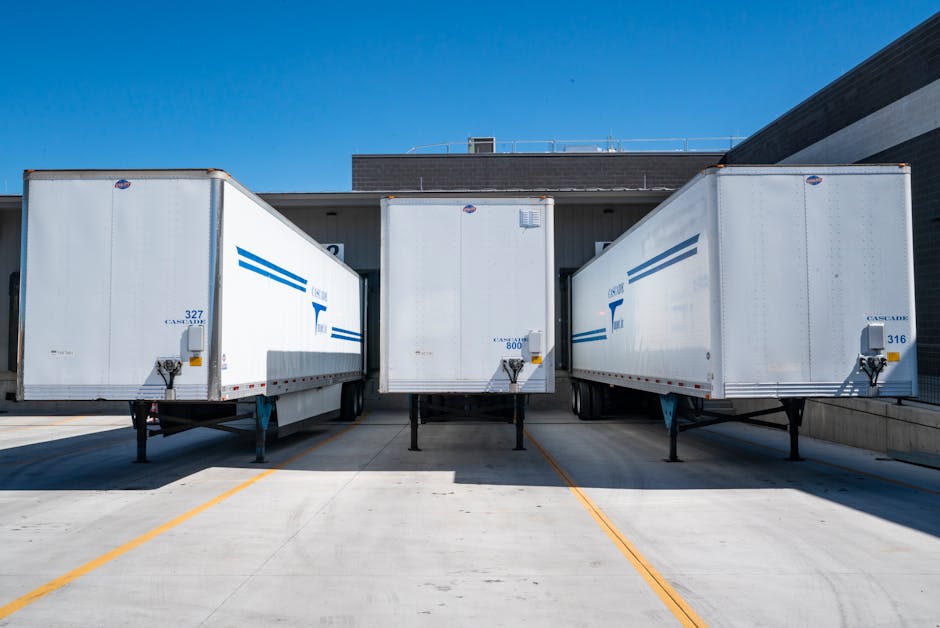What *exactly* does “ROC” mean when you’re tracking a package, and how will its meaning likely evolve by 2025? Understanding shipping statuses is critical in today’s e-commerce driven world. Misinterpretations can lead to unnecessary anxiety and frustration. This article will provide a definitive guide to “ROC” in shipping, explaining its current meaning, anticipated changes by 2025, and offering practical tips for navigating the often-complex world of package delivery. Prepare to demystify the acronym and gain a better understanding of the shipping landscape.
Decoding ROC: The Basics
In the context of shipping delivery, “ROC” typically stands for “Request on Call.” It signifies that the delivery driver attempted to deliver your package but was unable to do so, usually because no one was available to receive it at the specified address. The “on call” part indicates that the delivery service will attempt to contact the recipient to arrange a more convenient delivery time or alternative delivery location.
Think of it as a virtual “sorry we missed you” note. Instead of a physical slip left at your door, the “ROC” status alerts you through the tracking system that action is required on your part. You need to reach out to the shipping company to reschedule delivery.
However, variations in the specific meaning of “ROC” can occur depending on the carrier and the region. It’s crucial to check the carrier’s specific definition of the status on their website or app for the most accurate interpretation. Don’t assume its meaning without verifying!
ROC in 2025: Predictions and Future Implications
Looking ahead to 2025, the landscape of shipping and delivery will undergo significant transformations. Here’s how the meaning and implications of “ROC” are likely to evolve:
- Increased Automation and AI Integration: Expect smarter delivery systems that proactively anticipate potential delivery issues. AI algorithms will analyze recipient availability patterns and suggest alternative delivery options *before* a failed delivery attempt, potentially minimizing the occurrence of “ROC” statuses altogether.
- Enhanced Communication Channels: Rather than simply displaying “ROC,” expect more interactive notifications. Carriers will likely offer immediate options to reschedule, redirect to a nearby locker, or authorize delivery to a neighbor directly through the tracking app.
- Hyper-Personalization of Delivery: As data analysis becomes more sophisticated, delivery services will tailor their approach to individual recipient preferences. This could include preferred delivery windows, pre-approved alternative delivery locations, and even communication styles.
- Drone and Autonomous Vehicle Deliveries: The rise of drone and autonomous vehicle deliveries could further alter the “ROC” scenario. Systems will need to be in place to handle situations where a recipient is unavailable to accept a delivery from a drone or autonomous vehicle, potentially leading to variations in how “ROC” is interpreted and handled.
- Focus on Sustainability: With increasing pressure for eco-friendly practices, failed deliveries due to unavailability will be heavily scrutinized. “ROC” situations will prompt the carrier to suggest more sustainable delivery options, such as delivery to a centralized collection point, to reduce carbon emissions from repeat delivery attempts.
The future of “ROC” is intertwined with the broader trends shaping the shipping industry: greater automation, enhanced communication, and a stronger focus on sustainability and personalization. The traditional meaning will likely be augmented with proactive solutions and more granular options for recipients.
Practical Tips for Handling “ROC” Status in Shipping
Encountering a “ROC” status can be frustrating, but following these tips can help you resolve the issue efficiently:
- Check the Carrier’s Website or App Immediately: As emphasized earlier, verify the carrier’s specific definition of “ROC” to understand the available options.
- Contact the Carrier Directly: Don’t rely solely on the tracking information. Call the carrier’s customer service or use their online chat feature for personalized assistance.
- Reschedule Delivery: Choose a delivery date and time that is convenient for you. Many carriers offer specific delivery windows.
- Redirect the Package: If rescheduling is not feasible, consider redirecting the package to a nearby access point, such as a local store or locker.
- Authorize Delivery Without Signature: If you are comfortable with the package being left at your doorstep, you may be able to authorize delivery without a signature. However, be aware of the risks involved.
- Leave a Note for the Driver: If rescheduling or redirecting is not possible, you can leave a note for the driver with specific instructions, such as leaving the package with a neighbor or in a specific location. However, the driver is not obligated to follow your instructions.
Being proactive and communicative with the carrier is key to resolving “ROC” situations quickly and effectively. Don’t wait for the carrier to contact you; take the initiative.
Real-World Examples of “ROC” Scenarios
Let’s look at some real-world scenarios to illustrate how “ROC” might manifest in different situations:
- Scenario 1: Apartment Dweller: Sarah lives in an apartment building with a secure lobby. The delivery driver attempts delivery, but Sarah is not home, and the lobby is unmanned. The package receives a “ROC” status. Sarah needs to contact the carrier to reschedule or redirect the package to a nearby access point.
- Scenario 2: Rural Resident: John lives in a rural area with limited cell service. The delivery driver attempts delivery, but John is out working in the fields and cannot be reached by phone. The package receives a “ROC” status. John needs to check the tracking information online and contact the carrier to arrange a more convenient delivery time.
- Scenario 3: Business Address: Emily works at a small business that is closed on weekends. The delivery driver attempts delivery on a Saturday, but the business is closed. The package receives a “ROC” status. Emily needs to contact the carrier to reschedule delivery for a weekday.
These examples demonstrate how “ROC” can arise in various circumstances, highlighting the importance of being prepared and knowing your options.
The Impact of Technology on Reducing “ROC” Occurrences
Technology plays a crucial role in minimizing “ROC” events and enhancing the overall delivery experience. Here’s how technological advancements are contributing to fewer missed deliveries:
- Real-Time Tracking: Recipients can track their packages in real-time, allowing them to anticipate delivery and be available to receive it.
- Delivery Notifications: Carriers send automated notifications via SMS or email, alerting recipients to upcoming deliveries and providing estimated delivery times.
- Smart Lockers: Package lockers offer a secure and convenient alternative delivery location, eliminating the need for recipients to be home during delivery.
- Route Optimization: Delivery companies use sophisticated algorithms to optimize delivery routes, ensuring that drivers arrive at the right place at the right time.
- Predictive Analytics: By analyzing historical delivery data, carriers can predict potential delivery issues and proactively take steps to prevent them.
These technologies are collectively transforming the delivery landscape, making it more efficient, reliable, and customer-centric. The goal is to create a seamless delivery experience that minimizes the need for “ROC” interventions.
Common Misconceptions About “ROC” in Shipping
There are several common misconceptions about “ROC” that can lead to confusion and frustration. Let’s debunk some of the most prevalent myths:
- Myth 1: “ROC” means the package is lost. False. “ROC” simply means that the delivery attempt was unsuccessful. The package is typically held at a local facility for a certain period.
- Myth 2: The carrier will automatically reattempt delivery. Not always. In many cases, you need to contact the carrier to reschedule delivery.
- Myth 3: “ROC” is always the recipient’s fault. Not necessarily. Sometimes, “ROC” can occur due to unforeseen circumstances, such as inclement weather or traffic delays.
- Myth 4: I can ignore the “ROC” status and the package will eventually be delivered. Incorrect. If you don’t take action, the package may be returned to the sender.
Understanding the true meaning of “ROC” and avoiding these common misconceptions is essential for a smooth delivery experience. Being informed empowers you to take the necessary steps to resolve the issue promptly.
The Role of Customer Service in Resolving “ROC” Issues
When encountering a “ROC” status, the carrier’s customer service team can be a valuable resource. Here’s how customer service can assist you:
- Providing Clarification: Customer service representatives can explain the specific meaning of “ROC” in your situation and outline the available options.
- Rescheduling Delivery: They can help you reschedule delivery for a more convenient time or date.
- Redirecting Packages: They can assist you in redirecting the package to a nearby access point.
- Investigating Issues: If you believe the “ROC” status is in error, customer service can investigate the matter and provide updates.
- Answering Questions: They can answer any questions you have about the delivery process and provide guidance.
Don’t hesitate to contact customer service if you are unsure about how to proceed or if you encounter any problems. They are there to help you resolve the issue and ensure that you receive your package.
You can check BBC News for latest news related to shipping industry.
Preventive Measures to Avoid “ROC” Situations
While you can’t always prevent a “ROC” status from occurring, there are several steps you can take to minimize the likelihood:
- Provide Accurate Delivery Information: Ensure that you provide the correct address, apartment number, and contact information when placing your order.
- Track Your Package Closely: Monitor the tracking information regularly to anticipate the delivery date and time.
- Sign Up for Delivery Notifications: Enable SMS or email notifications to receive alerts about upcoming deliveries.
- Consider Using a Package Locker: If you are frequently unavailable during delivery hours, consider using a package locker service.
- Authorize Delivery Without Signature: If you are comfortable with the package being left at your doorstep, you may be able to authorize delivery without a signature.
By taking these preventive measures, you can increase the chances of a successful delivery and avoid the frustration of a “ROC” status. Proactive planning is always beneficial.
Looking Beyond “ROC”: The Future of Delivery Transparency
Ultimately, the goal is to move beyond simple “ROC” notifications to a more transparent and customer-centric delivery experience. This includes:
- More Granular Tracking Information: Providing more detailed information about the package’s location and estimated delivery time.
- Interactive Delivery Options: Allowing recipients to customize their delivery preferences in real-time.
- Proactive Problem Solving: Anticipating potential delivery issues and taking steps to prevent them.
- Seamless Communication: Providing easy and convenient ways for recipients to communicate with the carrier.
The future of delivery is about empowering recipients with more control and visibility. By embracing technology and prioritizing customer satisfaction, the shipping industry can create a more seamless and enjoyable delivery experience for everyone. Check the impact of AI in shipping industry in New York Times for latest information about the changes.
FAQ About “ROC” in Shipping Delivery
Here are some frequently asked questions about “what does roc mean in shipping delivery”:
What exactly does ROC mean in shipping delivery tracking?
ROC typically means “Request on Call,” indicating an attempted delivery failed because no one was available. The carrier will likely attempt to contact you to reschedule.
If I see ROC status, will the carrier automatically reattempt delivery tomorrow?
Not always. You should contact the carrier to confirm their specific policy and arrange a re-delivery.
What should I do immediately after seeing the ROC status in my tracking?
First, check the carrier’s website to confirm what “ROC” means specifically for them. Then, contact their customer service to reschedule or redirect your package.
Can I authorize delivery without signature after seeing the ROC status?
Potentially, yes. Check with the carrier if this is an option and if you are comfortable with the risks involved in leaving the package unattended.
How can I avoid getting a ROC status in the first place?
Provide accurate address information, track your package closely, and consider using a package locker or authorizing delivery without signature (where appropriate).
In conclusion, understanding “what does roc mean in shipping delivery” empowers you to take control of the situation and ensure a successful outcome. By staying informed, being proactive, and leveraging available technology, you can navigate the complexities of modern shipping and receive your packages without unnecessary delays or frustration. The future of “ROC” promises more flexibility and personalized options, making the delivery experience even more seamless.


















